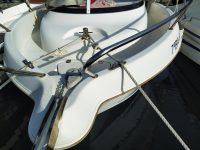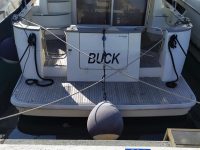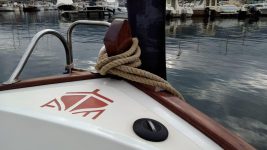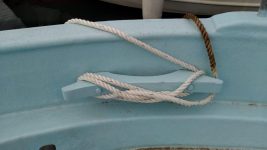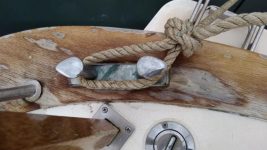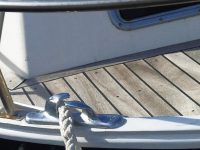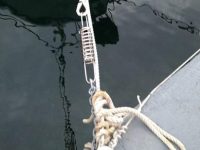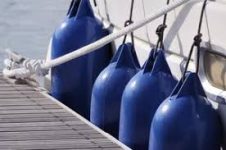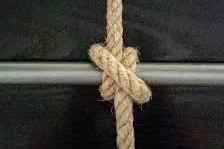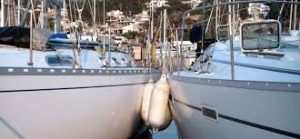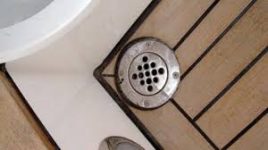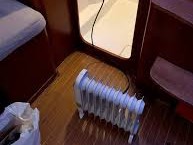Safety tips and recommendations:
- Mooring correctly ensures the safety of all boats.
- If you moor at the point, you need to leave a safe distance between the dock and the bow or stern of the boat to prevent unwanted bumps and/or scrapes due to wind and sea level fluctuations.
- Leaving the boat close to the dock can make access easier, but it can also cause damage. To avoid this, especially on longer ships, it is preferable to access it with a gangway and in this way, in the event of storms, you will be able to avoid damage to the hull structure.
- It is important that the mooring heads are in good condition and that they are suitable for the dimensions of your boat. Contact the Club's marine department if you detect any in poor condition.
- In boats of the boat type and/or sailboats moored at the stern, it is preferable to add 2 cross heads.
- Do not leave gauze on the hoses, think that if the crow's foot had to be tightened, it would be an added difficulty when removing the gauze from the dead man's head, although at first it seems that it could make work easier time to moor. DO NOT overlap the gauze, it is much better to tighten the ends to the maximum and make a mark (eg with tape) for reference.
- Use the grommets and/or cat eyes to pass the mooring heads; never pass them over the shelf, balconies or candlesticks.
- To avoid snags on the boat, use springs and/or mooring compensation systems, together with heads of respect.
- The fenders are the bumpers of our boat, you must choose the most suitable typology for your boat: spherical, cylindrical, flat... and secure them with a sparrow-type knot.
- For defenses to be effective, they must be placed at the correct height. One of the most important places to put them is at the point of maximum hose of your boat and of the maximum hose of boats moored to port and starboard.
- Put the name of the boat on the fenders, that way, if we find them in the water, we can put them back in their place.
- If your boat is a sailboat, you need to secure and check the sails, biminis and covers. If you do not plan to sail during the winter, it is better to remove them. Also review the general condition of the halyards, sheets and sails, replacing damaged heads, as well as the integrity and correct tension of stays and shrouds.
- Check that the drying pump works correctly automatically, even if you have an awning.
- Remove any pieces of cloth or paper from the bilge as it can clog the bilge pump when we need it most.
- Keep drains clean to avoid clogging.
- If your boat is covered with covers, these must be waterproof and adjusted to the size of the boat. To avoid pools of water, it is necessary to put an interior structure that prevents water from entering the interior of the boat.
- If the hatches or hatches are not watertight enough, notify your maintenance service so that they can check it so that in the event of heavy rain, we will prevent water from entering the boat.
- Also check the tightness of the bottom valves, sea water intake for engine cooling, good condition of the salt water filter, toilet and sink drains, speedometer, sounder, etc.
- Check the electrical system and under no circumstances leave electrical appliances plugged into the service tower during your absence. This is the main reason for fires in ports.
- Whenever possible run the engine every 15 days.
And remember, whenever you need it, you can request help from the Club's marine team, via VHF 9.


